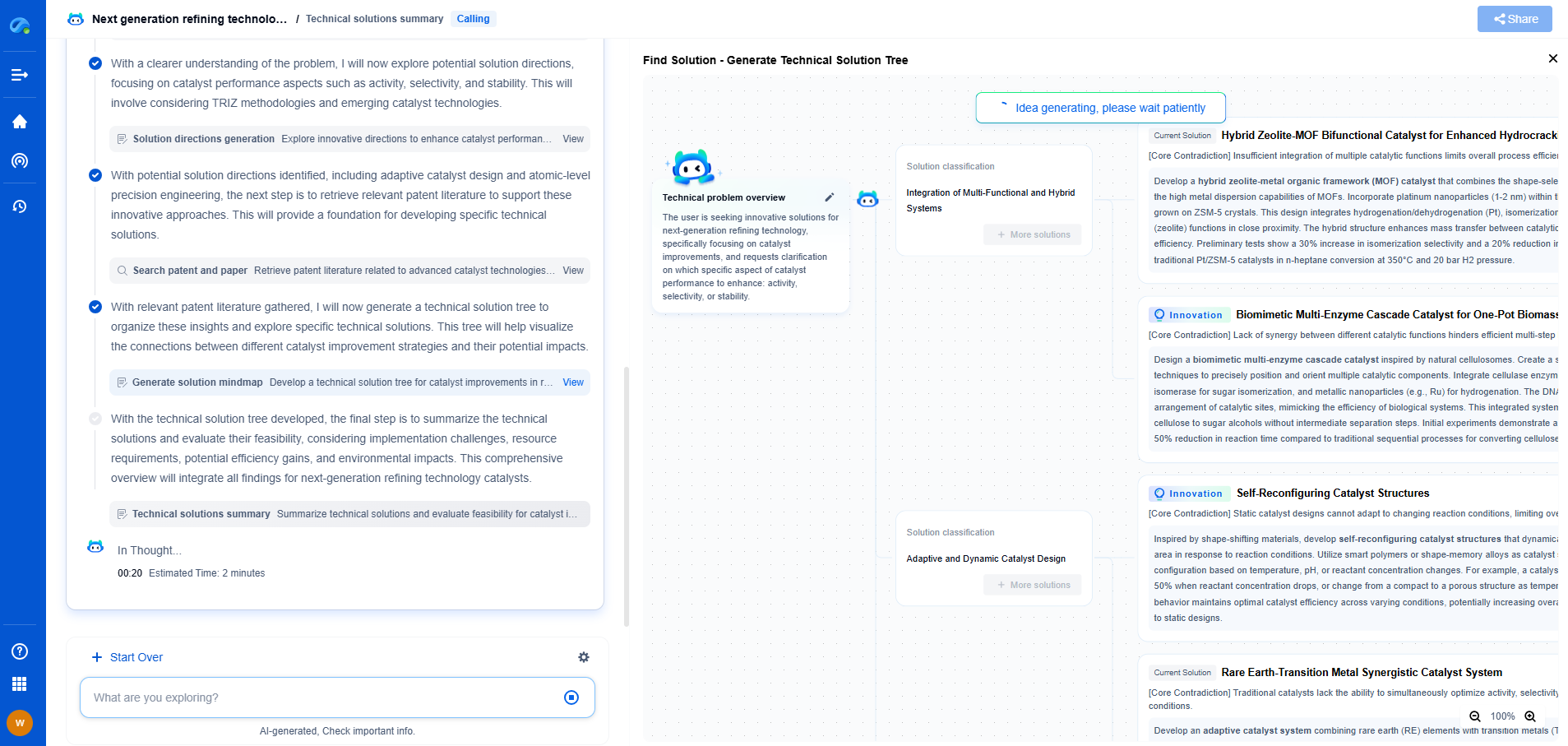What Is an IGBT and When Should You Use It?
JUN 27, 2025 |
An Insulated Gate Bipolar Transistor, commonly known as an IGBT, is a crucial component in modern electronics, especially in power electronics. The IGBT is a semiconductor device that combines the characteristics of both a Bipolar Junction Transistor (BJT) and a Metal-Oxide-Semiconductor Field-Effect Transistor (MOSFET). This combination allows it to handle high voltages and currents efficiently, making it a popular choice for various applications. Essentially, the IGBT offers the high input impedance and fast switching speed of a MOSFET with the high current and voltage handling capability of a BJT.
How Does an IGBT Work?
To understand how an IGBT works, it's essential to look at its structure. It consists of four layers of semiconductor material, typically silicon, creating three pn-junctions. The device's terminals are labeled as collector, gate, and emitter. When a voltage is applied to the gate, it controls the current flow between the collector and emitter. This gate voltage allows the IGBT to act as a switch, turning on when the gate voltage exceeds a certain threshold and off when it falls below that threshold. The ability to control large amounts of power with a small input voltage makes IGBTs highly efficient for power management.
When Should You Use an IGBT?
The use of IGBT is prevalent in applications where switching efficiency and power handling are critical. Here are some common scenarios where IGBTs are the preferred choice:
1. **Industrial Applications:** IGBTs are widely used in industrial applications such as motor drives and inverters. In these contexts, they help control the speed and torque of electric motors, enhancing energy efficiency and performance.
2. **Renewable Energy Systems:** In solar inverters and wind turbines, IGBTs play a vital role in converting DC power into AC power, which is then fed into the electrical grid. Their efficiency in handling high power makes them ideal for these applications.
3. **Consumer Electronics:** IGBTs are also found in consumer electronics, such as air conditioners and refrigerators, where they help regulate power consumption and improve energy efficiency.
4. **Electric Vehicles (EVs):** With the rise of electric vehicles, the need for efficient power conversion is more critical than ever. IGBTs are used in EVs to manage the power from the battery to the motor, optimizing performance and range.
Advantages of Using IGBTs
Using IGBTs in the aforementioned applications comes with several advantages:
- **High Efficiency:** IGBTs offer low conduction losses and high switch-off speed, making them highly efficient in power conversion processes.
- **Thermal Management:** These devices generate less heat during operation, which reduces the need for extensive cooling mechanisms and increases system reliability.
- **Compact Design:** The integration of IGBT allows for more compact and lightweight designs in electronic systems, which is particularly beneficial in space-constrained applications.
Limitations and Considerations
While IGBTs offer numerous advantages, they also have limitations that must be considered when integrating them into your systems:
- **Switching Losses:** At very high frequencies, IGBTs can incur switching losses, making them less suitable for high-frequency applications compared to MOSFETs.
- **Cost:** IGBTs can be more expensive than some alternative switching devices, which might be a consideration in cost-sensitive applications.
- **Not Ideal for Low-Power Applications:** For low-power applications, other types of transistors may be more efficient and cost-effective.
Future Trends in IGBT Technology
As technology advances, the development of IGBTs continues to evolve, focusing on enhancing their efficiency and reducing their size and cost. Innovations such as silicon carbide (SiC) IGBTs and the ongoing research into new materials promise even better performance in the coming years. These advancements are likely to expand the range of applications where IGBTs can be effectively used, further cementing their importance in the realm of electronics and power systems.
Conclusion
In conclusion, the IGBT is a versatile and efficient semiconductor device that plays a critical role in numerous modern electronic applications. By understanding its operational principles, advantages, and limitations, engineers and designers can make informed decisions about when and how to integrate IGBTs into their systems for optimal performance. Whether in industrial machinery, renewable energy, consumer electronics, or electric vehicles, the IGBT continues to be a cornerstone of power electronics innovation.
Empower Your Breakthroughs in Basic Electric Components with Patsnap Eureka
From resistors, capacitors, and inductors to fuses, connectors, superconductors, and nano-scale materials—basic electric elements may be the building blocks of modern electronics, but the innovation behind them is anything but simple. As device miniaturization accelerates and materials science pushes new frontiers, R&D and IP teams face increasing complexity in staying on top of technical advancements, patent activity, and competitive landscapes.
Patsnap Eureka, our intelligent AI assistant built for R&D professionals in high-tech sectors, empowers you with real-time expert-level analysis, technology roadmap exploration, and strategic mapping of core patents—all within a seamless, user-friendly interface.
🔧 Whether you’re optimizing energy storage, improving thermal resistance, or creating the next leap in circuit efficiency, Patsnap Eureka is your AI copilot for high-efficiency, high-precision R&D and IP strategy.
👉 Experience how Patsnap Eureka can revolutionize your R&D and IP strategy. Request a demo today and power up your next breakthrough.
- R&D
- Intellectual Property
- Life Sciences
- Materials
- Tech Scout
- Unparalleled Data Quality
- Higher Quality Content
- 60% Fewer Hallucinations
Browse by: Latest US Patents, China's latest patents, Technical Efficacy Thesaurus, Application Domain, Technology Topic, Popular Technical Reports.
© 2025 PatSnap. All rights reserved.Legal|Privacy policy|Modern Slavery Act Transparency Statement|Sitemap|About US| Contact US: help@patsnap.com

